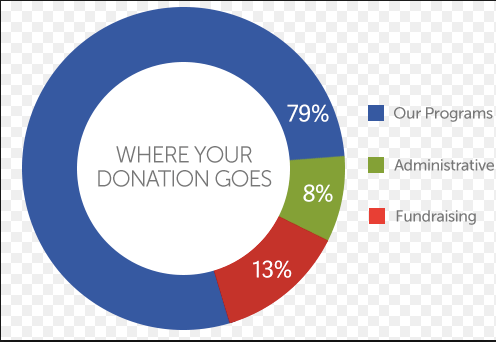How to Tell Your Donors Where Their Money Is Going

There’s no better way to gain the trust of your donors than by being transparent with them about where their contributions go. If people decide to part with their hard-earned money, they want to know where it ends up. Plus, having strong, consistent communication with your donors can increase your credibility and authenticity as an organization. Here are some tips on how to directly show your supporters the difference you’re making.
Break it down
Start by breaking down your fundraising goals into “micro-goals,” because sometimes it’s hard for donors to wrap their minds around large, abstract figures. For example, if you say you’re trying to raise $100,000 to build schools in Africa, also mention that it will cost each student $100 per year to attend. This makes the numbers easier to digest, and when you put contributions in terms of helping individuals, they’ll feel more connected to the cause.
Make it visual
If you want to go the extra mile, you can create charts and graphs that show how you allocate funds. You can then share these on your social media accounts, upload them to your website, create factsheets to hand out or whatever else you can think of. Here’s an example of a circle graph that a Texas Humane Society put on their website. See, you don’t need to give donors a down-to-the-cent analysis of your expense report. People will appreciate having a broad idea of how their donations are dispersed throughout your organization.
Explain the benefits of overhead
If you do choose to take on this level of transparency with your donors, be prepared to receive some questions about your overhead costs. (For example: “Why are so many of your funds being spent on administration and supplies?”).
Let your donors know that these expenses improve your organization’s performance as a whole, ultimately increasing its impact. Overhead costs pay for important investments like training and fundraising efforts, which are crucial in making your nonprofit sustainable. You should also remind donors to keep the bigger picture in mind. Your charity’s overhead ratio is not necessarily an indicator of its success, but rather a way to offer insight about how funds are broken down.
Don’t forget about emotion
So far, these tips have been very data-focused. And while many donors are very pragmatic about their giving, others let their hearts decide. So, don’t forget to tap into your audience’s emotions. On top of statistical figures, you should also be telling specific, impactful stories that pull on readers’ heartstrings in newsletters, thank-you notes, blog posts and other written content. If you combine personal testimonials with graphics and charts, you’ll create an emotional bond with your audience while also appealing to their logical side.
These tips will help those who support your cause feel good about where their money is going, which in turn will lead to a loyal donor base that trusts your organization.
The post How to Tell Your Donors Where Their Money Is Going appeared first on Nonprofit Hub.









Leave a Reply